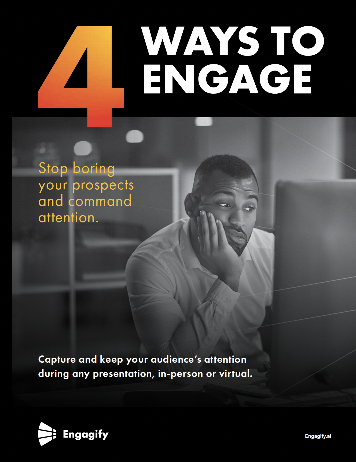There’s a bossy blog title for you. What is this post about?
It’s about influencing your prospects with your language skills. Whether you are in sales or marketing at a trade show, you need to know this technique because it’s very powerful.
Before we get into the actual influence technique let me be clear. This kind of influence needs to be used ethically. What I mean by that is that if you truly believe that your product, process or service can truly help your prospect, you’d be wrong not to bring it to their attention. You have to be ecological with your use of any influence technique. That means it has to be a win for everyone involved. Techniques such as this are to be only used if you wholeheartedly believe that your prospect would be better off with your product than without.
Why “Because”?
The power of using “Because” is well documented in Robert Cialdini’s book simply called “Influence”. In it, he recounts the 1989 Study by Harvard Social Psychologist Ellen Langer. Dr. Langer conducted a study on asking favors and tested the language used when asking.
The study involved asking a favor of the people waiting in line at a photocopier in a library. If the person cutting in line said “Excuse me, I have five pages. May I use the Xerox machine?”, just 60% of people allowed the favor asker to go ahead of them to make copies. Compare that to when the person asking said, “Excuse me, I have five pages. May I use the Xerox machine because I’m in a rush?”, which resulted in 94% compliance.
Now you might be thinking it’s not because of the word “because” but the reason the people in the line-up let someone cut ahead of them was that the line-cutter was in a rush. It seemed like a valid reason. Here’s the kicker. They tested for that variable and did a third variation where the script used to cut in line was “Excuse me, I have five pages. May I use the Xerox machine because I have to make some copies?”. This variation added no new information after the word “because” and amazingly resulted in a nearly identical compliance rate of 93%!
What this means is that the “reason” in the cause and effect statement doesn’t have to be a reason at all. It seems to be some sort of Jedi mind trick that hacks our brain and justifies the request.
How To Use “Because”
Just by being familiar with this technique is enough for you to start using this in certain situations. The next time you are making a request of someone, up your chances of an affirmative response by using “because” and giving “reason”. I put the word reason in quotes because (there it is again) it does not have to be a logical reason. It just has to make sense within the situation. Play with this and experiment with places this might be useful.
Here’s an example from the trade show industry:
Following a presentation have your presenter say “Everyone line up by the registration desk in our booth because we have to scan your badges.”
Do you employ booth staff/ Crowd Gatherers to engage passers-by and scan badges? Have your booth staffer approach the attendees by saying, “Can I scan your badge? Because you could win an Apple Watch!” They will quickly realize the advantage to this language pattern.
I Want to Learn More Because This Can Make an Impact at Our Company
Imagine having your booth staff, your sales people integrating cognitive persuasion techniques into their client conversations. Even if it only moved the needle by a few percentage points it could mean millions of dollars to your company’s sales. Get in touch with us and ask about our Presenting For Profits training for Sales Associates and Sales Engineers.




